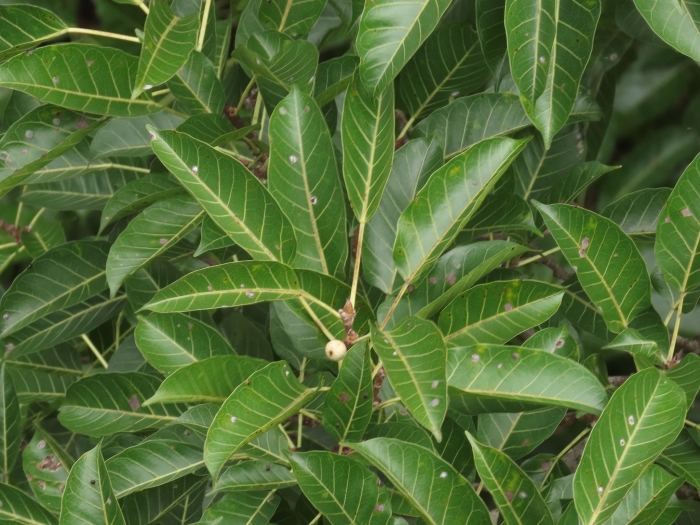White Fig
(Ficus virens)
White Fig (Ficus virens)
/
/

coenobita
CC BY 4.0
Image By:
coenobita
Recorded By:
Copyright:
CC BY 4.0
Copyright Notice:
Photo by: coenobita | License Type: CC BY 4.0 | License URL: http://creativecommons.org/licenses/by/4.0/ | Rights Holder: coenobita | Publisher: iNaturalist | Date Created: 2019-02-02T18:16:18-08:00 |
























Estimated Native Range
Summary
Ficus virens, commonly known as White Fig or Pilkhan, is a semi-evergreen tree native to a variety of habitats including monsoon forests, riverine areas, and coastal forests in Pakistan, India, Southeast Asia, and Northern Australia. It can grow up to 98 feet (30 meters) in height with a dense canopy that may spread widely. The White Fig is characterized by its smooth, light grey bark and a wide buttressed trunk in mature specimens. It produces small, inconspicuous flowers followed by small, pear-shaped fruits that turn from green to red as they mature.
The White Fig is valued for its shade-providing canopy and is often used in urban landscaping, large gardens, and along streets. It is also planted for its environmental benefits, such as improving air quality and providing habitat for wildlife. In cultivation, Ficus virens prefers full sun to part shade, moderate water, and well-drained soils. It is tolerant of a range of soil types, including clay, loam, and sandy soils. While it is relatively easy to maintain, it may require pruning to manage its size and shape. Gardeners should be aware that the aggressive root system can damage pavements and structures, so it should be planted with care in urban settings.CC BY-SA 4.0
The White Fig is valued for its shade-providing canopy and is often used in urban landscaping, large gardens, and along streets. It is also planted for its environmental benefits, such as improving air quality and providing habitat for wildlife. In cultivation, Ficus virens prefers full sun to part shade, moderate water, and well-drained soils. It is tolerant of a range of soil types, including clay, loam, and sandy soils. While it is relatively easy to maintain, it may require pruning to manage its size and shape. Gardeners should be aware that the aggressive root system can damage pavements and structures, so it should be planted with care in urban settings.CC BY-SA 4.0
Plant Description
- Plant Type: Tree
- Height: 30-60 feet
- Width: 50-100 feet
- Growth Rate: Rapid
- Flower Color: N/A
- Flowering Season: Spring
- Leaf Retention: Evergreen
Growth Requirements
- Sun: Full Sun, Part Shade
- Water: Medium
- Drainage: Medium, Fast
Common Uses
Bird Garden, Hedges
Natural Habitat
Monsoon forests, riverine areas, and coastal forests in Pakistan, India, Southeast Asia, and Northern Australia
Other Names
Common Names: White Fig, Pilkhan, Mountain Fig, Spotted Fig, Banyan Fig
Scientific Names: , Ficus virens, Artocarpus canaranus, Broussonetia integrifolia, Ficus aegeirophylla, Ficus ampla, Ficus apiculata, Ficus carolinensis, Ficus cunninghamii, Ficus glabella
GBIF Accepted Name: